http://urbanculxure.com/2015/03/textures-by-john-eppel-togara-muzanenhamo-review/
Mar 13, 2015
Textures is a collection of poetry by John Eppel and Togara Muzanenhamo published by Amabooks in 2014. The book launches is at CBC on the 18th of March and at Indaba Book Café on the 19th. Award winning poet Philani Amadeus Nyoni reviews it here.

John Eppel comes into Textures with over a dozen publications under his belt. An unflinching commentator, master wordsmith, tested and validated by time and experience, Textures is once again the breath of a master of traditional English verse.
Togara Muzanenhamo is relatively unknown in Zimbabwe, although he commands a large following abroad. He, along with Tinashe Muchuri, assisted with Julius Chingono’s poetry in Together. His first collection, Spirit Brides,was shortlisted for the Jerwood Alderburgh First Collection Prize in 2006. He is ranked among Zimbabwe’s finest poets on the page having represented the nation at the largest gathering of poets ever in 2012 in London. His poetry is in a world of its own and his unique forms contrast those of Eppel, finely balancing the book as a whole.
 Textures is Eppel’s third collaboration; his first was with the late, great Julius Chingono and I will draw a few comparisons between these two works. His second collaboration was with myself, therefore I cannot speak objectively of it.
Textures is Eppel’s third collaboration; his first was with the late, great Julius Chingono and I will draw a few comparisons between these two works. His second collaboration was with myself, therefore I cannot speak objectively of it.The first acute difference between the two poets is that Eppel is traditional stylist, and Muzanenhamo quite the opposite. Eppel sticks to traditional forms of English verse; in his own words he uses these forms as a way of self-mockery as a white African.
He is not averse to using forms like the sonnets, terza rima and the villanelle, which he executes with surgical precision. Most interesting is his personalisation of these styles. In ‘Sonnet with a Limp’ he distorts the metre (justifying the title), in ‘Beauty is Truth, Truth Death’ he keeps it Shakespearean, in ‘Not For Laura’ Petrarchan, but in sonnets like ‘Aloes at Hillside Dams’ or ’Giving up on the Rains in Curious Rhyme’ (again justifying the title) he rearranges the rhyme into a semi-invisible but regular scheme. The dexterity in the distortions brings to the fore the self-mockery, the irony in the choice of form.
Muzanenhamo is a fascinating poet. In poems like ‘The Ungiving’ and ’Mercantile Rain’ he rhymes, but he also employs many half-rhymes and in most of his work he is not too eager to stick to Western poetic traditions. He is a poet of the twenty-first century and an African poet, ‘a deliberate antistylist’ as the blurb to Together describes Julius Chingono. His arrangement on the page, the typesetting, is also part of the poem, and of the experience of reading his work.
Muzanenhamo reads like Soyinka: dense. Of his first collection, the Times Literary Supplement said ‘he can be cool but seldom light’. His poetry demands contemplation, which does not always resolve the headache inflicted; he is often esoteric where Eppel is more musical and accessible. This is another contrast.
As far as subjects go, Textures is quite radical and defies expectations for two reasons: imprimis, Eppel writes about home and Muzanenhamo writes more about places far removed in time and space. Muzanenhamo, who one would expect to be the more ‘African’, is the less ‘African’ of the two. Secondly, from his more recent works such as Absent: The English Teacher, White Man Crawling and even Together, one would assume Eppel would once again criticise poor governance and the abuse of power. It is these themes that have resulted in him being misconstrued as a racist, something he addresses in the satire Absent: The English Teacher, when, during a police interrogation, the lead character is asked if he hates black people, to which he replies ‘only as far as they are part of the human race’. This time he is mellower, more concerned with his surroundings, particularly flora and fauna, especially the birds.
Textures Launch
Muzanenhamo has a few pieces that might be interpreted as autobiographical, such as ‘Savannah Chapel’, however most of his work is about places far removed in time and space. He is a voyeur in history in ‘The Texan ’and ’Bluegrass Country’; he draws inspiration from the strangest stories, such as those of Isaac Murphy, Maurice Garin and Charles Péguy.
As a collaboration, this is a fine piece of literature unfurling new petals with every read. Eppel’s focuses on immortal subjects such as nature and human relationships as opposed to current affairs; Muzanenhamo draws inspiration from moments that stand out in the history of the world, lending the collection an air of timelessness.



















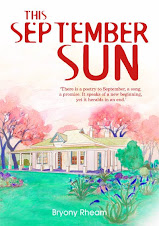.jpg)



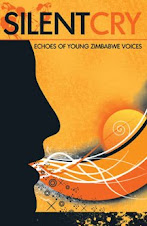
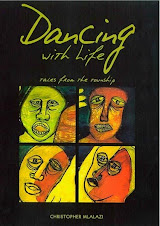

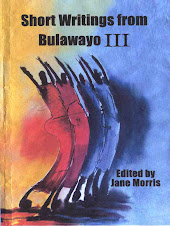


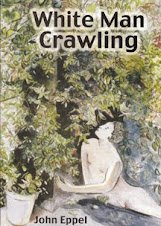










.jpg)





















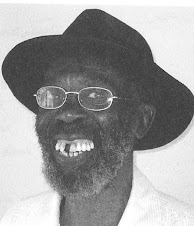






No comments:
Post a Comment